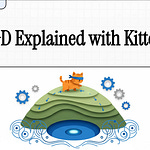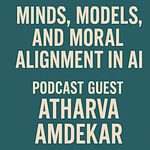As artificial intelligence models grow increasingly powerful, they also become more resource-intensive and expensive to operate. This challenge has pushed researchers and engineers to seek innovative solutions that maintain high performance while improving efficiency. Enter the Mixture of Experts (MoE) architecture - a breakthrough approach that's changing how we think about scaling AI systems. Much like how a large organization benefits from having specialized departments rather than making every employee a generalist, MoE models achieve remarkable efficiency by breaking down complex tasks into smaller, more manageable pieces handled by specialized components.
Here’s an example to make MoE models easier to understand. Imagine you're running a large hospital. Every time a patient arrives, you wouldn't want every doctor in the hospital to examine them simultaneously – that would be inefficient and chaotic. Instead, a triage nurse evaluates each patient and directs them to the most appropriate specialist. This is precisely how Mixture of Experts (MoE) models work in artificial intelligence.
The Core Mechanism
At its heart, an MoE model consists of three key components working in harmony:
The first component is the "gating network" – our triage nurse. This network examines each incoming piece of data and makes a crucial decision: which experts should handle this particular input? The gating network isn't just a simple switch; it's a sophisticated neural network that learns over time which experts perform best on which types of inputs.
The second component consists of the "experts" themselves. Each expert is essentially a neural network specialized in handling certain types of patterns or tasks. Unlike traditional neural networks where all neurons might activate for every input, MoE models only activate a small subset of experts for each task. This selective activation is what makes MoE models so efficient.
The third component is the combining mechanism, which weaves together the outputs from the activated experts into a final response. Think of it as a conference where multiple specialists contribute their insights to form a comprehensive diagnosis.
Why MoE Models Matter
The true brilliance of MoE models lies in their ability to scale efficiently. Traditional large language models face a fundamental challenge: as they grow larger, they become increasingly expensive to run because they activate their entire network for every task. MoE models take a different approach. Even though they might have more total parameters than traditional models, they only use a small fraction of these parameters for any given input.
Consider how an AI processes this German word: "Donaudampfschifffahrtsgesellschaftskapitän." (I adore German words. That one word practically takes up an entire line.) A traditional model would activate its entire neural network – billions of parameters – to understand this single word. But an MoE model works more intelligently, like a team of linguistic specialists collaborating.
The gating network first recognizes this as German and activates only the relevant experts: one specializing in German compound word formation, another in nautical terminology, and perhaps a third in professional titles.
These experts work together to break down the word into its meaningful parts: "Donau" (Danube) + "dampf" (steam) + "schiff" (ship) + "fahrts" (journey) + "gesellschafts" (company) + "kapitän" (captain). The model might use just 10-15% of its total parameters, efficiently processing what would otherwise be a computationally intensive task.
The Evolution of MoE
The Mixture of Experts (MoE) architecture was pioneered by Geoffrey Hinton and his colleagues in the early 1990s, marking another groundbreaking contribution from the researcher often called the "godfather of AI." However, the path from theoretical concept to practical implementation was far from smooth. Early MoE models faced significant technical hurdles: GPUs struggled with the branching operations required for routing between experts, training was often unstable, and the complexity of managing multiple expert networks posed substantial implementation challenges. These obstacles, combined with the computational demands of training MoE models, kept the architecture largely in the realm of academic research for many years.
The real renaissance of MoE began as AI models grew increasingly large and computationally expensive. Companies like Google and Microsoft recognized that continuing to scale traditional models would soon become prohibitively expensive, both in terms of computing resources and energy consumption. Google's introduction of the Switch Transformer in 2021 marked a turning point, demonstrating that MoE architectures could dramatically improve efficiency without sacrificing performance.
The real breakthrough for widespread adoption came in late 2023 when Mistral AI released Mixtral, a powerful open source MoE model. With 46.7 billion total parameters but only 12.9 billion active at any time, Mixtral managed to outperform much larger traditional models like Llama 2 70B while running six times faster. This practical demonstration of MoE's efficiency—achieving better results with fewer active parameters—helped establish MoE as a crucial architecture for the future of AI development, inspiring both open source projects and commercial implementations across the industry.
This trend has continued into 2025, with models like DeepSeek R1 achieving even greater efficiency—using only 37B active parameters out of 67B total (a 94% reduction)—while Qwen 2.5-Max has pushed the boundaries of token processing capabilities beyond 20 tokens while maintaining state-of-the-art performance.
Real-world Impact
The implications of MoE architecture extend far beyond technical efficiency. In practical applications, MoE models are revolutionizing how we approach complex AI tasks:
In language translation, different experts might specialize in different language families, allowing for more nuanced translations that capture cultural contexts and idioms. For instance, one expert might handle Romance languages, while another specializes in East Asian languages.
In computer vision, some experts might focus on detecting edges and shapes, while others specialize in color patterns or texture analysis. This specialization allows for more accurate and efficient image processing.
Understanding the Trade-offs
It's important to note that MoE models aren't without challenges. The gating network needs to make quick, accurate decisions about which experts to activate, and training these models requires careful balancing to ensure all experts remain useful and don't become redundant. Additionally, the communication overhead between components can introduce its own complexities.
Looking Forward
The future might see even more sophisticated implementations, such as hierarchical MoE systems where experts themselves contain sub-experts, or dynamic architectures where new experts can be added or removed based on emerging needs.
As we continue to push the boundaries of AI capabilities, MoE architectures represent a promising path forward. They offer a solution to the scaling challenges faced by traditional neural networks while potentially providing better performance through specialization.
WHAT THE WOLFPACK IS WATCHING:
Many thanks to Professor Tom Yeh for his outstanding lecture this past Tuesday explaining the “how” behind DeepSeek. The Mixture of Experts portion of the lecture helped inspire this article. Thank you, Professor, for this special lecture!
Vocabulary Key:
Mixture of Experts (MoE): An AI architecture that uses multiple specialized neural networks (experts) working together, each handling specific aspects of tasks they're best suited for.
Gating Network: The component that examines incoming data and decides which expert networks should process it, similar to a triage nurse directing patients to appropriate specialists.
Parameter Efficiency: A measure of how effectively a model uses its resources, with MoE models typically activating only 6-15% of their total parameters for any given task.
Expert Network: A specialized neural network trained to handle specific types of patterns or tasks within the larger MoE system.
Sparse Activation: The practice of only engaging a small subset of the model's total parameters for any given task, leading to improved efficiency.
Frequently Asked Questions
How is MoE different from traditional AI models? Traditional models activate all their parameters for every task, while MoE models selectively activate only the most relevant experts, significantly improving efficiency.
Why is MoE considered a breakthrough in AI development? MoE architecture offers a solution to the growing computational demands of AI by allowing models to scale up their capabilities while keeping resource usage manageable.
What makes MoE models more efficient? By activating only the necessary experts for each task, MoE models can achieve better results while using a fraction of the computing power required by traditional models.
How does the gating network know which experts to choose? The gating network learns through training which experts perform best on different types of inputs, developing sophisticated pattern recognition to make optimal routing decisions.
#MixtureOfExperts #MoE #AIEfficiency #DeepLearning #AIArchitecture #FutureOfAI #DeepSeek #Mistral #Mixtral #geoffreyhinton #deeplearningwiththewolf


















